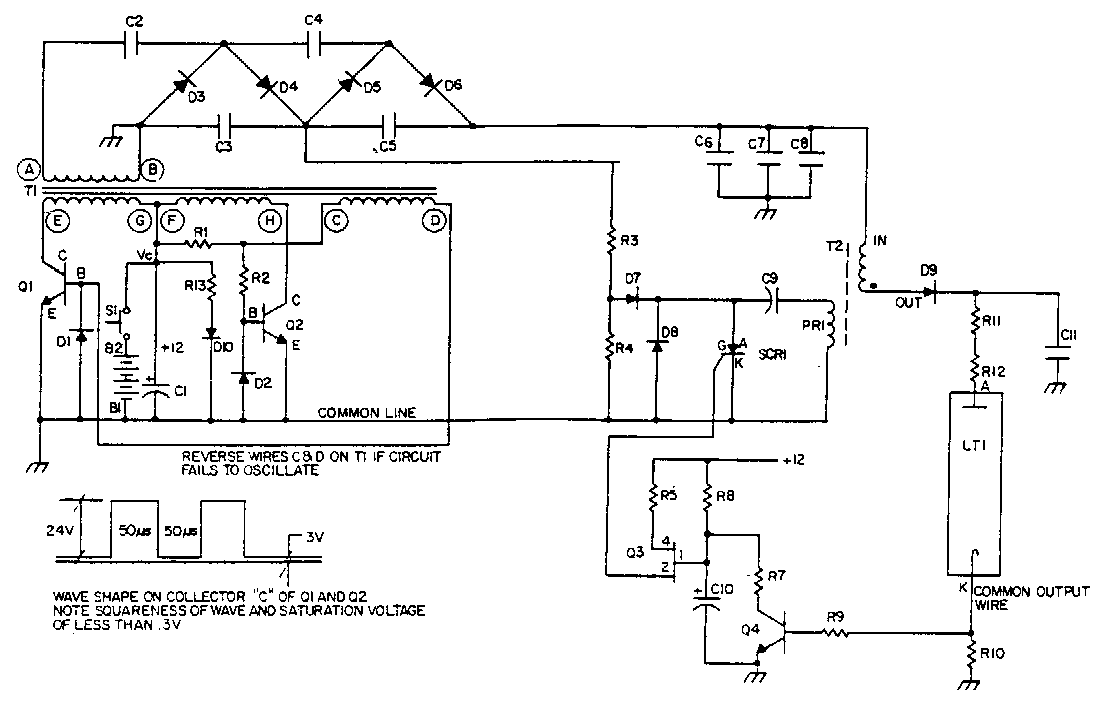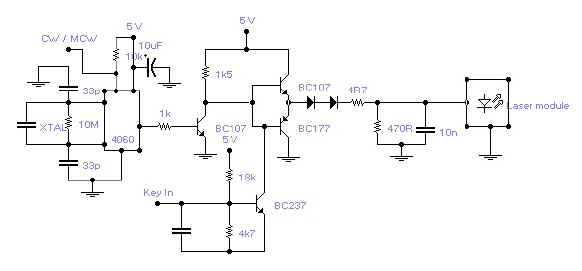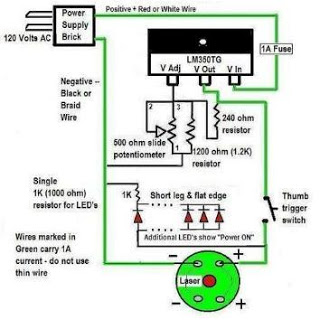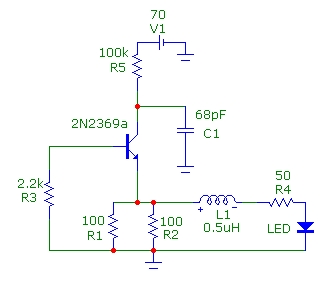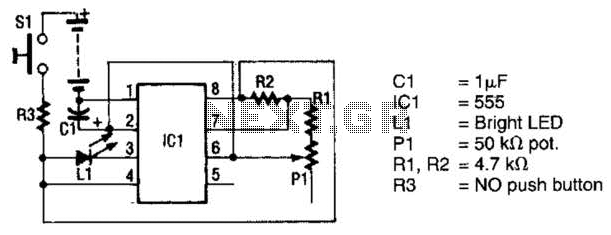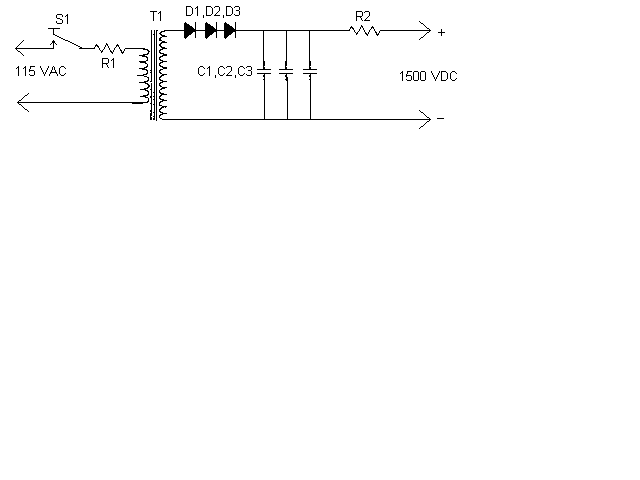
Advanced Projects in Laser Communication
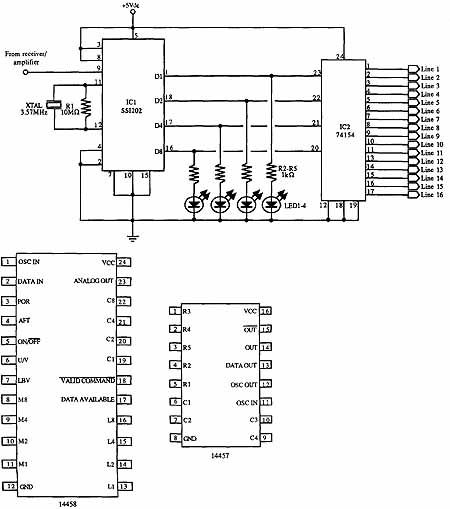
The previous section discussed several basic free-air laser light communication projects. It covered the modulation of a He-Ne laser beam using a transformer, transistor, and a piece of Mylar foil stretched in a needlepoint hoop. Various methods for electronically modulating laser diodes and recovering the transmitted audio signal were also explored. This section presents advanced projects in free-air laser-beam communication, detailing methods for remotely controlling devices and equipment via light and linking two computers using a laser beam. The concept of Touch-Tone dialing is introduced, where pressing buttons on a phone generates a series of tones that are decoded by telephone central office equipment to dial specific numbers. This technique can be adapted as a remote control for various devices, such as motors, alarms, lights, and doors, with the capability of operating over several miles without interference or FCC regulations. The Touch-Tone system supports up to 16 channels, with each channel activated by a pair of tones based on the buttons pressed on a keypad. For example, pressing the number 5 key activates the 770 Hz and 1336 Hz tones, while the number 9 key activates the 852 Hz and 1477 Hz tones. The dual-tone system helps prevent accidental triggering but poses a decoding challenge. Early tone dialing circuits utilized expensive tuned components, but custom ICs have since been developed to simplify the process. These ICs are now affordable and require minimal external components. Most telephones use a 12-key matrix, leaving out the last column of buttons, although many Touch-Tone decoding ICs can manage the full 16 channels. The aim of this project is not to dial other phones, but to use a phone dialer as a remote controller. There are several options for constructing the controller, with one approach allowing access to all 16 tone combinations, while others limit functionality to the 12 keys of a standard telephone. Salvaging a keypad and circuits from a phone may require additional effort unless a schematic is available, but this method provides a complete module. Alternatively, a portable tone-dialing adapter can be used, which is compact, battery-powered, and designed for rotary or pulse dial phones to access Touch Tone services. This adapter can be modified for use as a tone source for a PFM laser diode modulator, or its output can be connected to an audio amplifier and processed through the previously mentioned He-Ne laser modulator.
Advanced free-air laser communication projects utilize modulation techniques to facilitate remote control of devices via laser beams. The system can be set up to operate over long distances, providing a reliable means of communication without interference from other electronic devices or regulatory constraints. The modulation process typically involves encoding information into a laser beam by varying its intensity or frequency, which is then decoded by a corresponding receiver.
In practical applications, a Touch-Tone dialing system can serve as an effective remote control interface. The dialing system's matrix can be expanded to accommodate various devices, allowing for the selection and activation of multiple functions through a simple keypad interface. Each key press generates a unique combination of tones, which the receiver interprets as specific commands. The use of dual-tone signaling enhances reliability by reducing the likelihood of accidental activations.
For implementation, the system may include a laser diode modulator circuit, capable of converting audio signals from the dialing system into modulated laser light. This modulator can be constructed using a combination of operational amplifiers, transistors, and transformers to achieve the desired modulation characteristics. Additionally, a photodiode or phototransistor can be employed at the receiving end to detect the modulated light and convert it back into an electrical signal, which can then be processed to control the target devices.
The design should also consider power supply requirements, ensuring that the system operates efficiently within the specified voltage and current ratings. Battery-operated modules enhance portability, making the system suitable for various applications, from home automation to remote monitoring and control in industrial settings.
Overall, the integration of laser modulation techniques with Touch-Tone dialing systems presents a versatile and innovative approach to remote control applications, expanding the possibilities of laser communication technology in practical scenarios.The last section presented a number of basic free-air laser light communications projects. You learned how to modulate a He-Ne laser beam using a transformer, transistor, and even a piece of Mylar foil stretched in a needlepoint hoop. You also learned various ways to electronically modulate laser diodes and recover the transmitted audio signal.
Th is section presents advanced projects in free-air laser-beam communication. Covered are methods of remotely controlling devices and equipment via light and how to link two computers by a laser beam. Everyone is familiar with Touch-Tone dialing: pick up the phone and push the buttons. You hear a series of almost meaningless tones, but to the equipment in the telephone central office, those tones are decoded and used to dial the exact phone you want out of the millions in the world.
You can use the same technique as a remote control for actuating any of a number of devices, such as motors, alarms, lights, doors, you name it. The tone signals are sent from transmitter to receiver via a laser light beam. With the right setup, you can remotely control devices up to several miles away, and without worry of interference or FCC regulations.
The Touch-Tone (or more simply tone control ) system supports up to 16 channels. Each channel is actuated by a pair of tones. Tone selection depends on the buttons pressed on the keypad. Dividing a common 16-key keypad into a matrix of 4 by 4, as illustrated in ill. 14-1, shows how the tones are distributed. E. g. , pressing the number 5 key actuates the 770 Hz and 1336 Hz tones. Pressing the number 9 key actuates both the 852 Hz and 1477 Hz tones. The dual tones help prevent accidental triggering, but they also present a somewhat difficult decoding dilemma. The first tone dialing circuits used tuned components that were expensive and difficult to maintain. As tone dialing caught on, custom-made ICs were developed that dispensed with the tuned circuits. Until recently, these ICs have been rather costly and required some sophisticated interface electronics.
Now, Touch-Tone decoding ICs cost under $25 and operate with only two or three common components. Most telephones use a matrix of 12 keys, not 16, so the last column of buttons isn`t used. The circuits in the phone may or may not be able to reproduce the tones for the last column, but most off-the-shelf Touch-Tone dialing ICs are capable of the full 16-channel operation. Dialing other phones isn`t the goal of this project, but using a phone dialer as a remote controller is.
You have several alternatives for making the controller. The last approach allows you full access to all 16 combinations of tones. The other two approaches limit you to the 12 keys on a standard telephone ”digits 0 through 9 as well as the # and * symbols. Salvaging the keypad and circuits from a phone requires some detective work on your part, unless you happen to receive a schematic (not likely), but the advantage is you get the entire controller as one module.
The biggest disadvantage is that the dialing circuits may require odd operating voltages. The portable tone-dialing adapter, such as the one in ill. 14-2, is an easier approach, with the added benefit of an easy-to-carry (fits in your pocket) module that runs on battery power. The adapter is meant for use with rotary or pulse dial phones when you need to access services that respond to Touch Tones (long-distance services, computer ordering, etc.
). You place the adapter against the mouthpiece of the phone and press the buttons. ill. 14-3 shows how easy it`s to modify the dialer for use as a tone source for the PFM laser diode modulator. Alternatively, you can connect the output of the dialer to an audio amp and process it through the transformer or transistor He-Ne laser modulator described in the previous section.
The connections to the dialer`s speaker can remain in place, thereby providing you with audible fe 🔗 External reference
Advanced free-air laser communication projects utilize modulation techniques to facilitate remote control of devices via laser beams. The system can be set up to operate over long distances, providing a reliable means of communication without interference from other electronic devices or regulatory constraints. The modulation process typically involves encoding information into a laser beam by varying its intensity or frequency, which is then decoded by a corresponding receiver.
In practical applications, a Touch-Tone dialing system can serve as an effective remote control interface. The dialing system's matrix can be expanded to accommodate various devices, allowing for the selection and activation of multiple functions through a simple keypad interface. Each key press generates a unique combination of tones, which the receiver interprets as specific commands. The use of dual-tone signaling enhances reliability by reducing the likelihood of accidental activations.
For implementation, the system may include a laser diode modulator circuit, capable of converting audio signals from the dialing system into modulated laser light. This modulator can be constructed using a combination of operational amplifiers, transistors, and transformers to achieve the desired modulation characteristics. Additionally, a photodiode or phototransistor can be employed at the receiving end to detect the modulated light and convert it back into an electrical signal, which can then be processed to control the target devices.
The design should also consider power supply requirements, ensuring that the system operates efficiently within the specified voltage and current ratings. Battery-operated modules enhance portability, making the system suitable for various applications, from home automation to remote monitoring and control in industrial settings.
Overall, the integration of laser modulation techniques with Touch-Tone dialing systems presents a versatile and innovative approach to remote control applications, expanding the possibilities of laser communication technology in practical scenarios.The last section presented a number of basic free-air laser light communications projects. You learned how to modulate a He-Ne laser beam using a transformer, transistor, and even a piece of Mylar foil stretched in a needlepoint hoop. You also learned various ways to electronically modulate laser diodes and recover the transmitted audio signal.
Th is section presents advanced projects in free-air laser-beam communication. Covered are methods of remotely controlling devices and equipment via light and how to link two computers by a laser beam. Everyone is familiar with Touch-Tone dialing: pick up the phone and push the buttons. You hear a series of almost meaningless tones, but to the equipment in the telephone central office, those tones are decoded and used to dial the exact phone you want out of the millions in the world.
You can use the same technique as a remote control for actuating any of a number of devices, such as motors, alarms, lights, doors, you name it. The tone signals are sent from transmitter to receiver via a laser light beam. With the right setup, you can remotely control devices up to several miles away, and without worry of interference or FCC regulations.
The Touch-Tone (or more simply tone control ) system supports up to 16 channels. Each channel is actuated by a pair of tones. Tone selection depends on the buttons pressed on the keypad. Dividing a common 16-key keypad into a matrix of 4 by 4, as illustrated in ill. 14-1, shows how the tones are distributed. E. g. , pressing the number 5 key actuates the 770 Hz and 1336 Hz tones. Pressing the number 9 key actuates both the 852 Hz and 1477 Hz tones. The dual tones help prevent accidental triggering, but they also present a somewhat difficult decoding dilemma. The first tone dialing circuits used tuned components that were expensive and difficult to maintain. As tone dialing caught on, custom-made ICs were developed that dispensed with the tuned circuits. Until recently, these ICs have been rather costly and required some sophisticated interface electronics.
Now, Touch-Tone decoding ICs cost under $25 and operate with only two or three common components. Most telephones use a matrix of 12 keys, not 16, so the last column of buttons isn`t used. The circuits in the phone may or may not be able to reproduce the tones for the last column, but most off-the-shelf Touch-Tone dialing ICs are capable of the full 16-channel operation. Dialing other phones isn`t the goal of this project, but using a phone dialer as a remote controller is.
You have several alternatives for making the controller. The last approach allows you full access to all 16 combinations of tones. The other two approaches limit you to the 12 keys on a standard telephone ”digits 0 through 9 as well as the # and * symbols. Salvaging the keypad and circuits from a phone requires some detective work on your part, unless you happen to receive a schematic (not likely), but the advantage is you get the entire controller as one module.
The biggest disadvantage is that the dialing circuits may require odd operating voltages. The portable tone-dialing adapter, such as the one in ill. 14-2, is an easier approach, with the added benefit of an easy-to-carry (fits in your pocket) module that runs on battery power. The adapter is meant for use with rotary or pulse dial phones when you need to access services that respond to Touch Tones (long-distance services, computer ordering, etc.
). You place the adapter against the mouthpiece of the phone and press the buttons. ill. 14-3 shows how easy it`s to modify the dialer for use as a tone source for the PFM laser diode modulator. Alternatively, you can connect the output of the dialer to an audio amp and process it through the transformer or transistor He-Ne laser modulator described in the previous section.
The connections to the dialer`s speaker can remain in place, thereby providing you with audible fe 🔗 External reference
